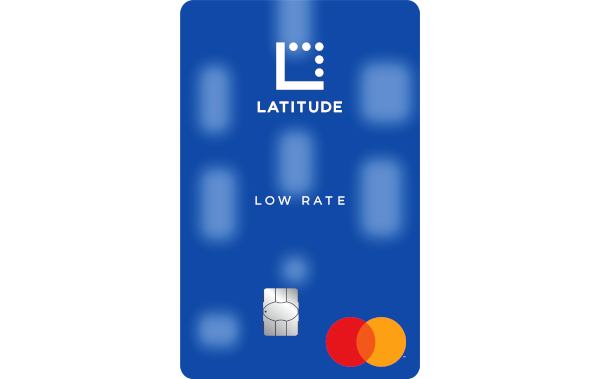- Home
- Credit Cards
- News
- Credit card school: what’s the right card for you?
Credit card school: what’s the right card for you?

The latest data from the Reserve Bank of Australia (RBA) shows there are 198,125 more credit accounts since the same time last year - the highest since March 2021.
All these accounts may make for easy spending or cashing in for first class travel, but many of those who get credit cards are possibly turning to a finance solution that they don’t fully understand – or may get them into trouble.
What’s driving the increase in credit card accounts?
RateCity research suggests frequent flyer flights and rewards points could be a key motivator for Australians to open credit card accounts.
A RateCity survey of almost 2,000 credit card users (1,911) found:
- Almost 1 in 4 (23%) people had opened a new credit card account in the last 12 months.
- Of these, almost 60% (59%) said they opened the account to get rewards points (flights and / or gifts / gift cards etc).
- Just over 1 in 5 (22%) said it was to transfer an existing debt to a 0% balance transfer deal.
- 29% needed a card to plug a hole in their current budget.
Note: respondents could tick more than one option.
What’s the catch?
While the lure of hefty sign-up points and potential ‘freebies’ may be enough to get thousands of Australians to open new accounts, they often come with large limits, high interest rates or expensive annual fees.
This could mean that many people, if they’re not careful, could risk leading themselves into a bad cycle of credit card debt.
What to watch out for with a credit card:
High interest rates
Most rewards cards come with high interest rates. If you’re someone who doesn’t clear their debt in full every month, you may want to compare some other card options.
The interest rates on rewards cards range from 12.99% to 23.99% with an average rate of 20.07%.
High annual fees
Sign-up perks are a one-off, whereas annual fees hang around until you close the card. Factor this into any decision you make.
For example, Qantas Money is offering up to 150,000 Qantas frequent flyer points, if you sign up to its Premier Titanium card – but charges $1,200 in annual fees. The average annual fees on a rewards card is $215, with the highest fee clocking in at $1,200.
High credit limits
Many rewards cards want you to take on a high credit limit. Not only does this increase your risk, but may also decrease how much you can borrow from a bank for a home or personal loan.
The RateCity.com.au database shows the average minimum credit limit on these cards is $6,908, while the highest is $20,000.
Jumping from deal to deal
Hopping between credit cards can be tempting, but if you don’t close the old card in time you could end up paying multiple annual fees. Taking out multiple cards in a relatively short period of time could also potentially damage your credit score.
Not all points are worth the same
The value of points can differ among providers. Try to do the maths on just how many points you’ll need – and what it will cost you – before signing up.
Most cards won’t allocate you the sign-up points until at least three months after opening the card, while others hold off on delivering the full amount for a year.
The long haul
Lenders are increasingly offering significant ‘sign up’ points in two batches, with the second being after year one, in a bid to secure at least two annual fees from a customer before they card hop to another deal.
Cost of credit card debt
It’s vital to remember that lenders will never ask you to repay your debt in full over a short period of time. It’s typically just 2% of the balance owing or $20, whichever is higher.
Many rewards cards promise hefty bonus points on sign up – but with a minimum spend to secure them.
This means if someone got a rewards card and spent $5,000 to secure the sign-up points, at the average interest rate of 20.49% interest they’d be paying their debt off for almost 25 years, and interest at almost twice the original debt amount.
Time to pay off credit card debt
Paying minimum repayments only. Does not factor in annual fees.
| Original debt | Interest rate | Total interest charged | Time taken |
| $5,000 | 20.49% | $9,606 | 24 years, 11 months |
Source: ASIC MoneySmart
If you’ve picked up a credit card recently, here are some helpful tips:
- Don’t let the credit card company decide how much you can spend: Set yourself a strict budget and make it one that you know you can afford to pay back
- Don’t use your credit card to plug a hole in your budget: If your budget doesn’t add up, you need to make a structural change to that budget.
- If you slip up, ask for help: If you slip up for one month and get hit with an interest charge, call your provider and ask for them to waive it. Everyone makes mistakes and if it’s a one off, they might say yes. You can also ask your credit card company to waive your annual fees.
- If you are carrying around a wad of debt, make a plan to get rid of it: Consolidating your debt on to a personal loan could force you to pay the whole debt off in a reasonable timeframe without the temptation to add to it.
Compare credit cards
Product database updated 03 Nov, 2025
Share this page
Get updates on the latest financial news and products
By continuing, you agree to the RateCity Privacy Policy, Terms of Use and Disclaimer.












